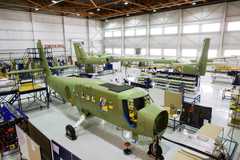Viking Air / Canada
Blue-sky thinking
Viking Air, a small parts manufacturer from British Columbia, had never even thought about building aeroplanes, but when the firm acquired the licences for de Havilland’s discontinued but adored sea and bush planes, the clamouring demand from all over the world proved too loud to ignore.
When redundant passenger jets fill desert lots and bargain carriers crowd every tarmac, the time when flight was a gutsy pioneers’ endeavour, best undertaken with planes as tough as cannonballs, seems lost. At the western edge of Canada, however, one company is reviving that old expeditionary spirit – and discovering that the country’s rugged aviation history is good for more than nostalgia.
Viking Air, a firm based outside the British Columbia capital of Victoria, began 40 years ago as a spare-parts manufacturer. By the 1980s, the company was specialising in parts for the classic sea and bush planes built by de Havilland, the Canadian branch of the legendary British aircraft company. De Havilland marques, such as the Beaver and Twin Otter, enjoyed national icon status in Canada – designed specially for the country’s northern and coastal frontiers, the little propeller-driven planes evoked an age of daredevil explorers in fur-collared leather jackets. Bush pilots the world over revered de Havillands for their versatility – the Twin Otter can land on water, snow, ice, sand, tundra, gravel, rock, or most anything else – and near indestructibility.
However, most of the classic de Havillands had been out of production for decades. Aerospace giant Bombardier absorbed de Havilland Canada in 1992, and little Viking seemed fated to act as caretaker for a romantic but obsolete brand. Bombardier’s rights to the planes also prevented Viking from selling parts direct to customers. “People would call to ask for parts, and we’d have to say, ‘Sorry – we have them but can’t sell them to you,’” says Angela Murray, Viking’s marketing and business development representative. The solution arrived in 2006, when Viking bought the manufacturing licences – known as type certificates – for seven de Havilland models. With around 150 staff at the time, Viking simply hoped to speed service to its customers. The clientele, however, had other ideas.
“As soon as we got the type certificates, people said, ‘Alright, you’ve got them, congratulations,’” Murray says. “‘Now start making the Twin Otter again.’ We had no intention whatsoever of building an aeroplane. We were a parts and repair company, and that was it. But the demand was too strong to ignore.” A market study confirmed the worldwide appetite for new Twin Otters, and in 2007, Viking announced plans for an improved version of the 19-seat plane. The Canadian press hailed the news, and orders from around the globe quickly piled up. In just two years, Viking went from 135 staff to over 400 and built new manufacturing facilities in Victoria and opened a final assembly facility in Calgary, Alberta. The firm hopes to have its Twin Otter Series 400 in the skies by the end of this year.
“The Twin Otter name gives us instant credibility,” says Rob Mauracher, Viking’s vice president of business development. “People know it works on every continent, at every altitude, under all conditions. We’re not changing what’s proven about the aircraft – we’re adding value, making it better and bringing it back to meet a demand that never really went away.” The plane called Olivia cuts a dashing figure on a typical grey British Columbia morning, with a sharp and very Canadian red-and-white paint scheme and a rocket-like short take-off run that’s almost alarming to watch. As she buzzes above Viking’s headquarters, Olivia looks brand-new; in fact, the plane rolled off de Havilland’s assembly line in the 1950s. Viking rebuilt this DHC-2 Beaver from the ground up, converting it to a turbo engine and expanding its passenger space.
Such one-off retrofits provided Viking’s introduction to the bogglingly complex world of aircraft construction, but its plans for the Twin Otter demanded a daunting leap in scale. “A conversion and reconstruction project is more of an artistic, craftsman-like design process,” Murray says. “You do them one at a time and they require six months of work, minimum. To put the Twin Otter back into full-scale production, we had to reinvent our whole company.”
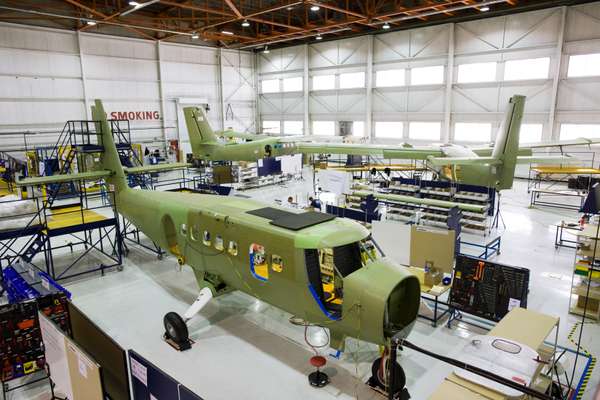

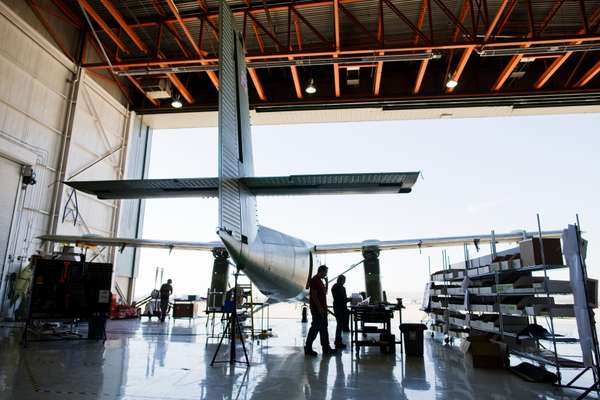
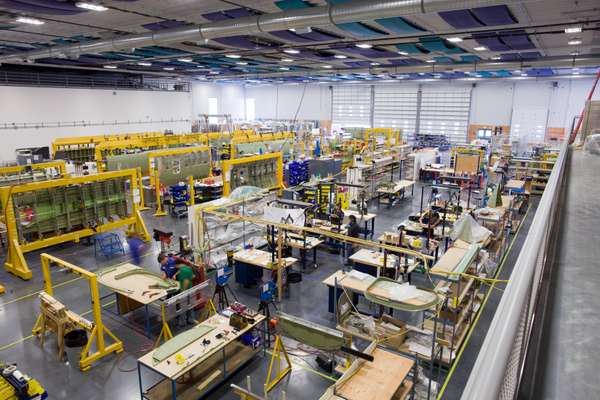
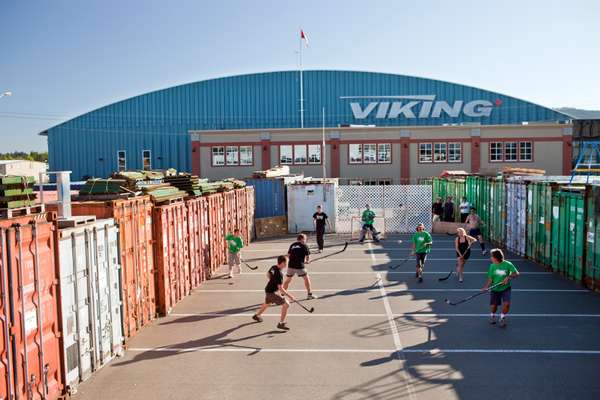
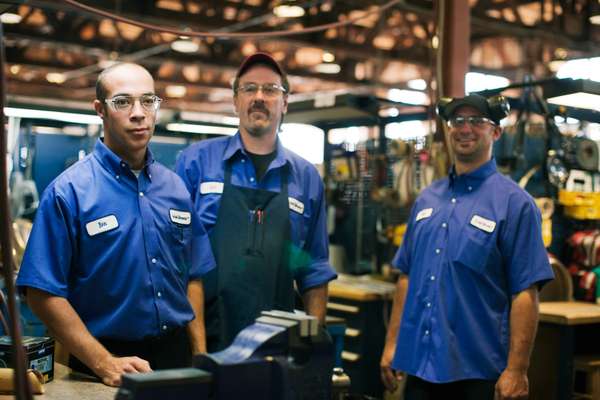

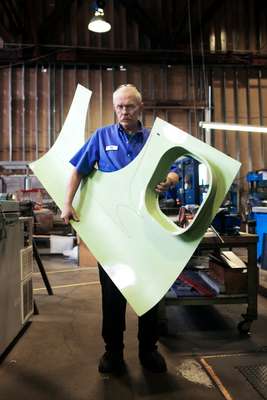
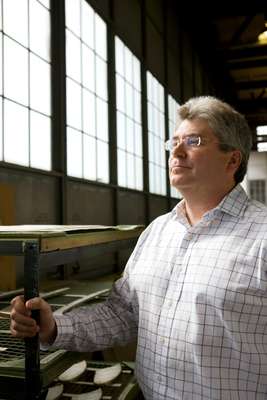
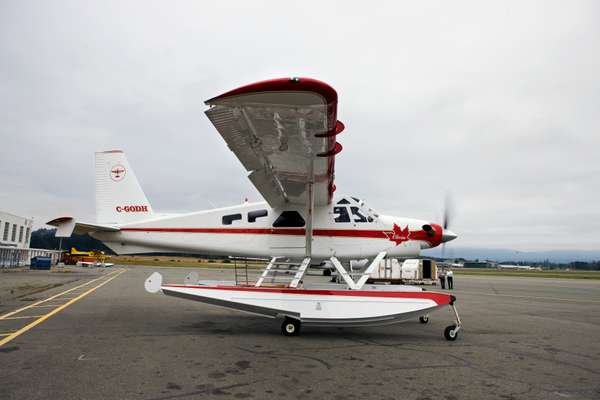
The results are plain to see in Viking’s gleaming new factory just off Victoria airport’s landing strip. At one of dozens of stations, technicians in crisp blue uniforms work on the curved ribs for a Twin Otter wing. Statistics posted at the station measure the speed and progress of this Twin Otter – just the seventh built by Viking, but the 851st in history – against the standards set on de Havilland’s long-ago assembly line. Viking acquired all the surviving technical and engineering data when it bought the de Havilland licences, a crucial source of guidance for a firm looking to meld niche-market quality with mass-production efficiency.
“When we started with the Series 400, we decided we would make the process completely transparent and traceable,” Murray says. “These guys are starting to bang out these planes pretty darn fast, but we still haven’t matched de Havilland’s pace. We’re building a plane more or less the way they were built in the 1950s, but we’re working to incorporate modern manufacturing techniques.” This kaizen cleverness makes the contrast between old and new all the more striking. Decades-old custom equipment salvaged from the original de Havilland factory in Ontario is in the hands of workmen who were children when the Twin Otter ceased production in 1988. To bring that old gear back to life, Viking resorted to some esoteric research.
“We had students from the University of Victoria in looking at grainy black-and-white photos of the old assembly line,” Murray says. “They would take calipers and measure the width of the guys’ heads in the photos. We could then say, well, 85 per cent of human heads fall into a certain range, so in comparison, the component they’re working on must be this or that size.”
Murray says that Viking eventually hopes to build two Twin Otter 400s a month (current pace falls closer to one a month), with all components made in Victoria and final assembly completed in Calgary. With more than 40 orders already on backlog, the company could be measuring photographed heads for some time. The atmosphere at Viking Air combines the zingy social energy of a start-up – staff have built their own street-hockey court out of shipping containers – and a quiet confidence befitting a globally beloved brand. Of the 844 Twin Otters built by de Havilland between 1965 and 1988, more than 600 are still airborne.
The Twin Otter inspires fanatical loyalty. “If one of these crashes and a dataplate can be salvaged, people want them rebuilt,” says Steve Stackhouse, Viking’s manager of flight operations. “They send them here all twisted up, and we untwist them.” Repair and parts supply remain major focuses for Viking. One of the eight Twin Otters owned by Argentina’s air force is currently in Victoria for an overhaul, and not long ago a trashed Beaver showed up in a shipping container from Lagos, without a scrap of documentation on who owned it or what needed doing.
The future, however, clearly lies with the new Twin Otter. Even with an interior stripped and engines exposed for inspection, the Twin Otter retains its rawboned elegance. Indeed, apart from digital avionics and some lighter composite materials, the new Twin Otter is a faithful recreation of the old icon. “It’s fun to fly,” Stackhouse says. “The Twin Otter performs like no other aeroplane, simply because it can operate, unsupported, just about anywhere. You can land and take off in a space no bigger than a baseball diamond – it freaks people out if they’ve never seen it before. You can land it in the ocean or fly it in the Himalayas. And this new plane flies just exactly like the old one.”
With a base price of just over $4m (€2.7m) – more for luxury and military adaptations – one might expect a new entrant in a niche market to suffer in the current economic climate. Not so far. The Series 400 is attracting customers as varied as the US Army, a Swiss energy exploration firm and Air Loyauté, which runs a combined passenger/cargo/medevac/postal service in New Caledonia. Murray estimates the firm fields three enquiries from potential new customers each week. “The de Havilland brand creates a stable base for us,” Murray says. “Other producers are shutting down and laying off workers. Meanwhile, we’ve been growing and training new workers.”
The Twin Otter’s rebirth testifies to the value of both high-quality heritage and gritty practicality – and already has Viking thinking about the future. “One thing that I find exciting about Viking is that it’s a Canadian solution,” says Murray. “In Canada we’re famous for being followers, but this is a chance to be a leader in our market and show it can be done here.”
Planes sailing
While de Havilland craft such as the Twin Otter operate mostly on land, Viking’s Rob Mauracher notes that global demand for their water-landing capabilities – and for other brands’ seaplanes – is on the rise. “It is a huge market that’s been neglected, and now we’re seeing it come back,” he says. Mauracher says that island and developing nations are keen to develop their air capabilities without taking on the expense and environmental impact of building full-scale airports.
“If you’re an archipelago – like Greece, say – it makes more sense to emphasise seaplanes. They require much less infrastructure, they use less fuel and they make less noise.” For Viking this is good news – its HQ city of Victoria is home to one of the world’s busiest maritime aerodromes.
Long division
“Building one plane is easy. Building a company that builds planes is hard,” says Viking’s Rob Mauracher— so why make it more difficult by splitting manufacturing between Victoria and Calgary – over 1,000km apart? Call it a divide-and-conquer strategy. Calgary is across the border in Alberta, so Viking can get support from two local governments. Recruitment plays a role as well, as Calgary is a cheaper city. While Viking sees its Victoria plant as its main hub, its Calgary facility was designed to be replicable anywhere in the world. And Viking’s Angela Murray says demand for these planes remains strong even as the economy has triggered a collapse in the private-jet market. When the going gets tough, it makes sense to fly a Beaver, a Dornier 28 or a Cessna Skywagon.
Twin Otter tales
Hang about Viking and you are bound to hear colourful (not to say terrifying) stories about the Twin Otter. In Samoa, a pilot used a fence to stop his Twin Otter after a broken cable caused an out-of-control landing, then wrapped the damaged nose in duct tape for the flight home. Viking’s own flight director was flying a Twin Otter over Angola when a surface-to-air missile struck the plane – which he landed, repaired and flew again. In 2001, a Twin Otter managed an unprecedented medical evacuation from the South Pole, landing in -100 C temperatures. On a less knuckle-whitening but also impressive note, Scottish carrier Loganair lands Twin Otters on the beach on the Hebridean island of Barra – the only passenger service in the world scheduled according to the tides.

